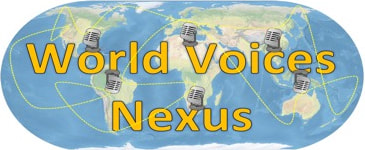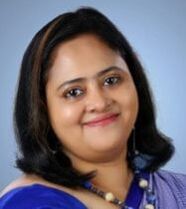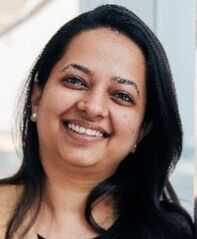- Home
- About WVN
-
WVN Issues
- Vol. 1 No. 1 (Oct. 2017) >
- Vol. 2 No. 1 (Feb. 2018) >
- Vol. 2 No. 2 (Jun. 2018) >
- Vol. 2 No. 3 (Oct. 2018) >
- Vol. 3 No. 1 (Feb. 2019) >
- Vol. 3 No. 2 (Jun. 2019) >
- Vol. 3 No. 3 (Oct. 2019) >
- Vol. 4 No. 1 (Feb. 2020) >
- Vol. 4 No. 2 (Jun. 2020) >
- Vol. 4 No. 3 (Oct. 2020) >
- Vol. 5 No. 1 (Feb. 2021) >
- Vol. 5 No. 2 (Jun. 2021) >
- Vol. 5 No. 3 (Oct. 2021) >
- Vol. 6 No. 1 (Feb. 2022) >
- Vol. 6 No. 2 (Jun. 2022) >
- Vol. 6 No. 3 (Oct. 2022) >
- Vol. 7 No. 1 (Feb. 2023) >
- Vol. 7 No. 2 (Jun. 2023) >
- Vol. 7 No. 3 (Oct. 2023) >
- Vol. 8 No. 1 (Feb. 2024) >
-
Events
- CIES 2023, Feb. 14-22, Washington D.C., USA
- ICES 4th National Conference, Tel Aviv University, Israel, 20 June 2021
- 2022 Virtual Conference of CESHK, 18-19 March 2022
- ISCEST Nigeria 7th Annual International Conference, 30 Nov.-3 Dec. 2020
- 3rd WCCES Symposium (Virtually through Zoom) 25-27 Nov. 2020
- CESA 12th Biennial Conference, Kathmandu, Nepal, 26-28 Sept. 2020
- CESI 10th International Conference, New Delhi, India, 9-11 Dec. 2019
- SOMEC Forum, Mexico City, 13 Nov. 2018
- WCCES Symposium, Geneva, 14-15 Jan. 2019
- 54th EC Meeting, Geneva, Switzerland, 14 Jan. 2019
- XVII World Congress of Comparative Education Societies, Cancún, Mexico, 20-24 May 2019
- ISCEST Nigeria 5th Annual Conference, 3-6 Dec. 2018
- CESI 9th International Conference, Vadodara, India, 14-16 Dec. 2018
- ICES 3rd National Conference, Ben-Gurion University, Israel, 17 Jan. 2019
- WCCES Retreat & EC Meeting, Johannesburg, 20-21 June 2018
- WCCES Symposium, Johannesburg, 21-22 June 2018
- 5th IOCES International Conference, 21-22 June 2018
- International Research Symposium, Sonepat, India, 11-12 Dec. 2017
- WCCES Info Session & Launch of Online Course on Practicing Nonviolence at CIES, 29 March 2018
- WCCES Leadership Meeting at CIES, 28 March 2018
- 52nd EC Meeting of WCCES, France, 10-11 Oct. 2017
- UIA Round Table Asia Pacific, Chiang Mai, Thailand, 21-22 Sept. 2017
- Online Courses
|
Abstract
The COVID-19 pandemic gave insights into the need gaps of social-emotional skills, values education, and life skills among students. Despite WHO and UNICEF advocating its benefits over two decades, many schools have struggled to incorporate values education and emotional learning with mainstream academics due to challenges at multiple levels. This paper traces the journey of the development of a curriculum on life skills education for grades six to nine, that is practically implementable, can be incorporated with the academic calendar, and can generate meaningful and tangible outcomes in learners in India. The research team considered various models and selected the Hilda Taba model of curriculum development. Learner needs were diagnosed from past experiences of conducting life skills workshops and the researchers’ personal encounters with students. Interviews and surveys with educators, parents and students helped to narrow down the learning objectives to better social interactions, classroom behaviour, global thinking, improvement in academic performance, and employability. Every quarter of the school calendar year was designed to focus on a theme viz. SEL, Community living, Values, and Transferable skills. The sequence of topics (e.g., Self- awareness, Emotional Intelligence, Diversity & Inclusion, Empathy, Resilience, etc.) was determined according to the expected maturity of the learner. Using a combination of experiential learning and independent study methodologies, and leveraging technology, a hybrid learning model was adopted for delivery. While creating activities, different learning styles, inquiry-based learning, and flipped classroom methodologies were considered. To standardize the curriculum, an evaluation process was outlined. Formative and summative assessments including a pre-test and post-test were selected as interventions to examine the learners’ experiences, while interviews with parents and review meetings with educators were included for receiving further feedback. This study presents the different stages of curriculum development and discusses the reflections of the developers during the process. Keywords: Curriculum development, Life skills education, Values education, Social-emotional learning, Integration of skill-based curriculum, Hilda Taba model, Applied life skills Introduction The role of values education and socio-emotional learning in the education of students has been researched to a great extent. It is important for the development of students, both inside and outside of school. It helps to improve the emotional well-being and mental health of students and also helps to prevent any adverse outcomes. The WHO and UNICEF have been advocating the benefits of life skills education for over two decades. Yet, many schools have struggled to incorporate values education and social-emotional learning in mainstream academics due to challenges at multiple levels. The repercussions of the lack of values education and SEL were seen during the COVID 19 pandemic. We are aware of the impact of school closures on the students’ emotional well-being and mental health. Students faced many challenges while dealing with the circumstances, adapting to the many changes around them. It is now, that the role of SEL and values education has become even more relevant as we try to bring students to normalcy again. But the challenges of effective implementation of this complementary yet crucial education, remain constant. We decided to set up a research team to study the cause of these challenges and build solutions. Our research team is from the education segment and together we have a hundred man-years of professional experience. We started researching the ground realities on the awareness and accessibility of quality education in life skills. During our research, we discussed these challenges with the stakeholders from different schools in Mumbai viz. Principals, administrators, teachers, counsellors, and parents. Based on the feedback received, we categorized the challenges into three domains –
Curriculum Development The objective of the research team was to create a curriculum that is authentic, relevant, and constructive. The content should generate interest in the learner’s mind, yet provide a challenge, and be completely aligned to the desired outcomes. The key features of this curriculum that will make it effective to implement in a school and create an impact are:
Developing a curriculum requires thorough planning and design to create learning that is purposeful, organized sequentially, and enhances the interactions between the teacher and the learner. We referred to the different models available for curriculum development. We focused on the philosophy, approach to teaching, and methodology that matched our requirements. A detailed study was done on the possible goals, content, learning experiences, methodology, and evaluation of the proposed curriculum. After studying the literature, the team decided to adopt the Hilda Taba model of curriculum development. Taba elucidates the seven steps of curriculum design based on the Tyler model. The base for development is simple – it should be designed such that the students can learn. She promotes the use of a ‘grassroots approach’ i.e., instead of an administrative approach which is mainly top to bottom, a ‘down-to-top’ model can be used. Here, students are at the forefront. Also, since the teacher is aware of the needs of the students, they play a major role in the stages of development. Therefore, creating teaching-learning situations forms an integral part of this curriculum. Our journey of the development of a curriculum on life skills education based on the Hilda Taba model is given in detail below. 1. Diagnosing learner needs For diagnosing the learner needs, we decided to connect with the key stakeholders of the learning environment of a student - parents, and educators. We harnessed different ways of understanding the subject:
While surveying the value perception, there was an agreement that greater priority was given to academics and there was a disproportionately less focus on mental health, life skills, and values education. However, we perceived a difference in the interactions that happened during and post the pandemic. There was a positive shift in the value perception that was now inclining towards life skills. Parents and school authorities were open to discussing and planning interventions for the development of these skills within academic learning. We also tried to understand what the obstacles were with the implementation of existing solutions. Mentioned below are some of the key challenges:
Lack of time given to values educationAt the school level, values education is often neglected, and the time allotted for it is often replaced with scholastic subjects due to the lengthy syllabus and paucity of time for its completion. Skills training is accessible, mostly always to professionals, and not affordable to the majority of students. There is also a lack of trained coaches needed for skill development, considering the teacher-student ratio in most schools. Broadly, the expectations of parents, educators, and the students were identified as given below:
2. Formulation of objectives During discussions with parents and educators, they shared the skills they hoped that todays’ learners would be able to imbibe by the end of their academics. They all pointed towards better social skills, emotional regulation, improved performance, a strong personality, clarity about their future, and an ability to lead an emotionally and financially independent, happy, self-sufficient life. These points guided us on what needs to be covered or emphasised, in the curriculum. The next task was to translate the learning objectives based on these learner needs. Based on the inputs of the interviewees, and our preliminary understanding, we articulated the learner needs into objectives and categorized them as given below:
These objectives also indicate the kind of behaviour expected and the content to which the behaviour is applicable. 3. Selection of content A meaningful curriculum is that which includes more in-depth learning that requires higher-order learning skills. Selecting fewer topics, but doing in-depth training would create more meaningful outcomes, i.e., quality over quantity. It is imperative to create content that a learner can relate to and connect with. The learner has to be completely involved with the content. Based on the objectives documented, we began to research the relevant available subject matter for guidance. We studied the Global and Local recommendations for skills development in children and adolescents. Our key references mainly included the following amongst others: •Life Skills Education for children and adolescents in schools – WHO •Comprehensive Life Skills Framework – UNICEF •National Education Policy 2020 – India Referring to these guiding documents, we developed our framework considering the Indian school setting, the academic calendar, and the skills that were identified as the need of learners based on interactions with stakeholders. Hence, the team also set about finding answers to the below questions:
4. Organisation of content Once we outlined the content to be included, it had to be organized in a particular sequence, taking into consideration the maturity of learners, their academic knowledge, and their interests. We decided to focus on a particular age group. We had been conducting skill development workshops for students, starting from age 6 years to 24 years. Based on our experience as well as NEP 2020 guidelines, we decided to first develop the curriculum for the learners studying in the middle school stage, i.e., age 11 to 14 years or Class 6 to 8. Generally, the academic year in India begins in April and ends in the following year around March. Every school typically gets around 30-35 weeks out of the 52 weeks in a year for academic sessions. These details of the months and number of weeks may vary depending on the education board, the state, and the grade level. We divided the academic year into four quarters. The content for each quarter was based on a theme or a concept we wanted to drive. Each theme covered two modules or two skills. Thus, a learner would imbibe eight skills in one academic year. As the learner moves to a higher grade, there would be a transition in the themes/concepts and the corresponding modules/skills would change. The skills-set selected under each theme was chosen and arranged based on the relevance to the learner, considering their age, comprehending ability, and the requirement of a particular skill for that age. The aim was to train on fewer skills but to teach them at a deeper level. Sufficient time needs to be provided for the learners to absorb and reflect on the learnings. In order to make an impact on the personality of the student, to convert an action into a habit, it was necessary to include depth rather than breadth. 5. Selection of learning experiences It is crucial to understand how a student will retain the content. To ensure that, learning experiences for any content should be planned well. So, while selecting an appropriate instructional methodology, we had to take care of aspects like:
Since all students learn in their unique way, each module was designed to give equal attention to the different learning styles. Every module ensured that the learner has something to visualize and listen to in the form of video content, something to read in the eBooks, and something to do through the activities. There was a scope for self-assessment through a knowledge check at the end of each module. And since nothing can replace actual interactions, there are in-person or online interactive hands-on workshops on the same topics. Learners can upload their presentations and activity sheets on the platform and access the recordings of the live workshops. Thus, the learner would work independently during the digital delivery and in groups during the workshops. We aim to harness the power of experiential learning through this mechanism. 6. Organisation of learning experiences Since any group of learners will always be heterogeneous, having different learning techniques will give flexibility to the curriculum and become more acceptable. Hence, the curriculum under discussion has a balance between visual content, audio content, written content and activities to be performed, that would be evaluated. To begin with, the learners would go through the videos that would introduce the skill to them. Following this would be an activity that the learner performs by following the instructional video. Once the activity is performed, another video explains how to interpret our actions and improvise them. The learner then undertakes a self-assessment to reflect on the learning. There is reading material provided with references for additional learning. Supporting activities are also provided to ingrain the skill-set further. Although this is the recommended organization, we have provided a scope for the learners to discover the content on their own, to make them feel more involved and engaged with their learning, and choose a flow that suits their individuality. The aim here is to have a balance between the different experiences that a learner can get out of the content. Here, the role of the facilitator cannot be emphasised enough. They will play a pivotal role in the roll-out of the digital content, the activities, live workshops, and the resolution of the queries of the learners. At the end of the year, students will get to showcase their learnings and projects completed that year. 7. Evaluation At the beginning of the year, the learners will take a life skills assessment to set an individual baseline score. The same tool will be used at the end of the year to check the change in the scores and understand the transition in the learners. The assessment can be repeated annually or once in 2 years. In addition to this, evaluator assessments are included after every two modules which would gauge the ability of the learner to apply the skill learnt in day-to-day, real-life case scenarios. The test will be administered before the beginning of the third module, which will give sufficient time for the learner to assimilate and demonstrate the learnings. This integrated assessment strategy will allow the learners to assess their understanding. It will help us understand if the learning objectives are being met. The yearly interviews with parents and review meetings with educators will help procure feedback on the program, the curriculum, and the process. These insights gathered will be used for fine-tuning the design and delivery. All of these interventions will help to ensure that the curriculum we develop remains dynamic, not set in stone, and continues to enrich further with time. Conclusion To ensure the curriculum model is robust and the learning outcomes are impactful, the team underwent multiple rounds of discussion during the developmental process. It was crucial to take into consideration the transition of the Alpha generation (born in 2010 and later) during the pandemic and the post-pandemic days. At present, the Alpha generation is the most educated, globally informed, and techno-savvy generation. They are used to a personalized approach to learning. But they may also face certain issues. We bear witness to the psychological impact of digital lives on the minds of this generation. They have less time for socialising, which means reduced interactions with other humans in real-time. They have a reduced capacity for imagination, creation, and even achieving happiness. This may translate into poor social behaviours and an inability to articulate or regulate emotions. The Alpha generation is the future of our planet Earth. It is on their shoulders that the responsibility of our planet lies. Hence, it is crucial that they are exposed to experiential learning and they must receive the right guidance, training, and knowledge. Their skill-sets need to be developed to enable them to think critically and creatively. In a world of artificial intelligence and robotics, they would need lessons in values education, life skills, and socio-emotional learning to stay relevant, thrive, and adapt to the ever-changing global landscape. Acknowledgement The wealth of insights and knowledge of our research team and the authors of this paper is what has enabled us to develop this curriculum. Together, our team has 100+ years of collective experience across diverse sectors. We thank the educators and parents who participated in the surveys and personal interviews. We also appreciate the participants of our webinars and workshops who actively engaged with us in the Q&A sessions and discussion forums. This study would not have been complete without the contribution of them all. About Alpha School of Life Skills We are working in the space of Life Skills & Leadership Development for youth. We are a recognized start-up by the Govt. of India. We are associated with InFED, IIM Nagpur, and NSRCEL, IIM Bangalore. We are institutional members of the Indian Association of Life Skills Education. We partner with academic institutions for conducting skill-development programs for students. We are on a mission to equip the youth of our nation with life skills to make them capable of leading happy and complete lives. References Bovill, C., Morss, K., & Bulley, C. (2009). Should students participate in curriculum design? Discussion arising from a first year curriculum design project and a literature review. Pedagogical Research in Maximising Education. Costa, A. L., & Loveall, R. A. (2002). The legacy of Hilda Taba. Journal of curriculum and supervision, 18(1), 56-62. Hardikar, G., Nair, A. R., & Ranjan, M. S. National Education Policy 2020 and Inclusion of Life Skills Education in Curricula: The Way Forward. Meyers, N. M., & Nulty, D. D. (2009). How to use (five) curriculum design principles to align authentic learning environments, assessment, students’ approaches to thinking and learning outcomes. Assessment & Evaluation in Higher Education, 34(5), 565-577. Mohanasundaram, K. (2018). Curriculum design and development. Journal of applied and advanced research, 3(1), 4-6. National Education Policy (2020). Ministry of Human Resources Development, Government of India United Nations Children's Fund (UNICEF). (2019). Global framework on transferable skills. WHO. (1999). Partners in life skills education. Geneva, Switzerland: World Health Organization, Department of Mental Health. Yorke, L., Rose, P., Bayley, S., Wole, D., & Ramchandani, P. (2021). The Importance of Students’ Socio-Emotional Learning, Mental Health, and Wellbeing in the Time of COVID-19.
0 Comments
|
AuthorsSarbari Dutta, B.Sc., B.Ed. Gauri Hardikar, PhD., M.Sc., M.A.
Alpha School of Life Skills Mumbai India Seema Negi, , M.Phil., M.A.(Sociology), M.A.(Edu), B.A., B.Ed., PGDEM
Alpha School of Life Skills Mumbai India Abhilasha Singh, , M.Sc., B.Ed.
Alpha School of Life Skills Mumbai India Shunila Joy Chauhan, D.Litt., M.A., B.Ed.
Alpha School of Life Skills Mumbai India Varsha Damle, B.Sc., B.Ed., M.A. (Edu), D.S.M.
Alpha School of Life Skills Mumbai India Madhura Mohadikar, PGDBA (Business Administration)
Alpha School of Life Skills Mumbai India Rama Bhide, M.Pharm.
Alpha School of Life Skills Mumbai India ArchivesCategories |
- Home
- About WVN
-
WVN Issues
- Vol. 1 No. 1 (Oct. 2017) >
- Vol. 2 No. 1 (Feb. 2018) >
- Vol. 2 No. 2 (Jun. 2018) >
- Vol. 2 No. 3 (Oct. 2018) >
- Vol. 3 No. 1 (Feb. 2019) >
- Vol. 3 No. 2 (Jun. 2019) >
- Vol. 3 No. 3 (Oct. 2019) >
- Vol. 4 No. 1 (Feb. 2020) >
- Vol. 4 No. 2 (Jun. 2020) >
- Vol. 4 No. 3 (Oct. 2020) >
- Vol. 5 No. 1 (Feb. 2021) >
- Vol. 5 No. 2 (Jun. 2021) >
- Vol. 5 No. 3 (Oct. 2021) >
- Vol. 6 No. 1 (Feb. 2022) >
- Vol. 6 No. 2 (Jun. 2022) >
- Vol. 6 No. 3 (Oct. 2022) >
- Vol. 7 No. 1 (Feb. 2023) >
- Vol. 7 No. 2 (Jun. 2023) >
- Vol. 7 No. 3 (Oct. 2023) >
- Vol. 8 No. 1 (Feb. 2024) >
-
Events
- CIES 2023, Feb. 14-22, Washington D.C., USA
- ICES 4th National Conference, Tel Aviv University, Israel, 20 June 2021
- 2022 Virtual Conference of CESHK, 18-19 March 2022
- ISCEST Nigeria 7th Annual International Conference, 30 Nov.-3 Dec. 2020
- 3rd WCCES Symposium (Virtually through Zoom) 25-27 Nov. 2020
- CESA 12th Biennial Conference, Kathmandu, Nepal, 26-28 Sept. 2020
- CESI 10th International Conference, New Delhi, India, 9-11 Dec. 2019
- SOMEC Forum, Mexico City, 13 Nov. 2018
- WCCES Symposium, Geneva, 14-15 Jan. 2019
- 54th EC Meeting, Geneva, Switzerland, 14 Jan. 2019
- XVII World Congress of Comparative Education Societies, Cancún, Mexico, 20-24 May 2019
- ISCEST Nigeria 5th Annual Conference, 3-6 Dec. 2018
- CESI 9th International Conference, Vadodara, India, 14-16 Dec. 2018
- ICES 3rd National Conference, Ben-Gurion University, Israel, 17 Jan. 2019
- WCCES Retreat & EC Meeting, Johannesburg, 20-21 June 2018
- WCCES Symposium, Johannesburg, 21-22 June 2018
- 5th IOCES International Conference, 21-22 June 2018
- International Research Symposium, Sonepat, India, 11-12 Dec. 2017
- WCCES Info Session & Launch of Online Course on Practicing Nonviolence at CIES, 29 March 2018
- WCCES Leadership Meeting at CIES, 28 March 2018
- 52nd EC Meeting of WCCES, France, 10-11 Oct. 2017
- UIA Round Table Asia Pacific, Chiang Mai, Thailand, 21-22 Sept. 2017
- Online Courses









 RSS Feed
RSS Feed
